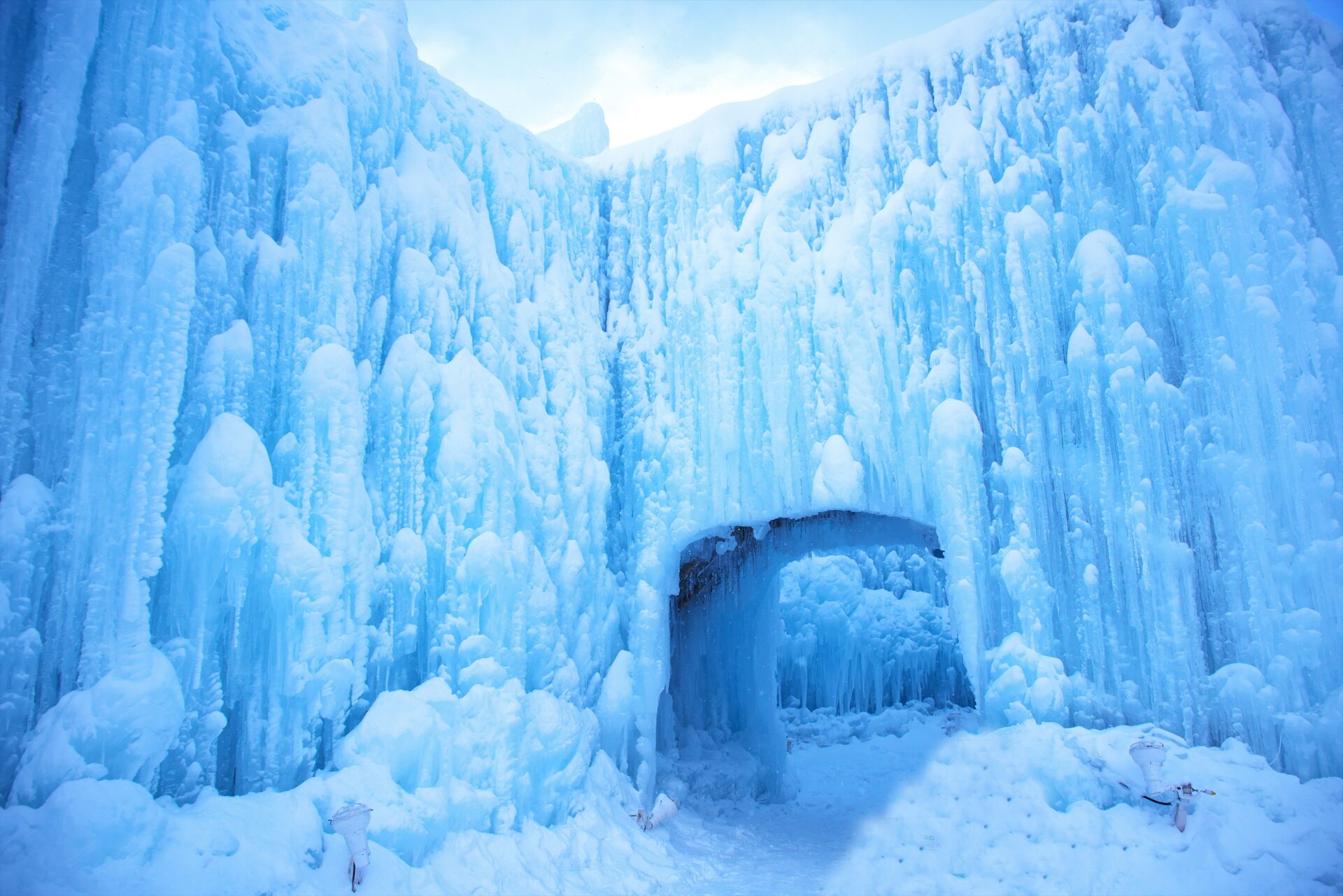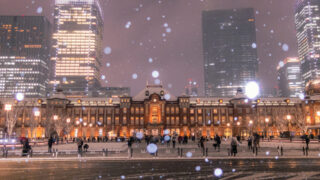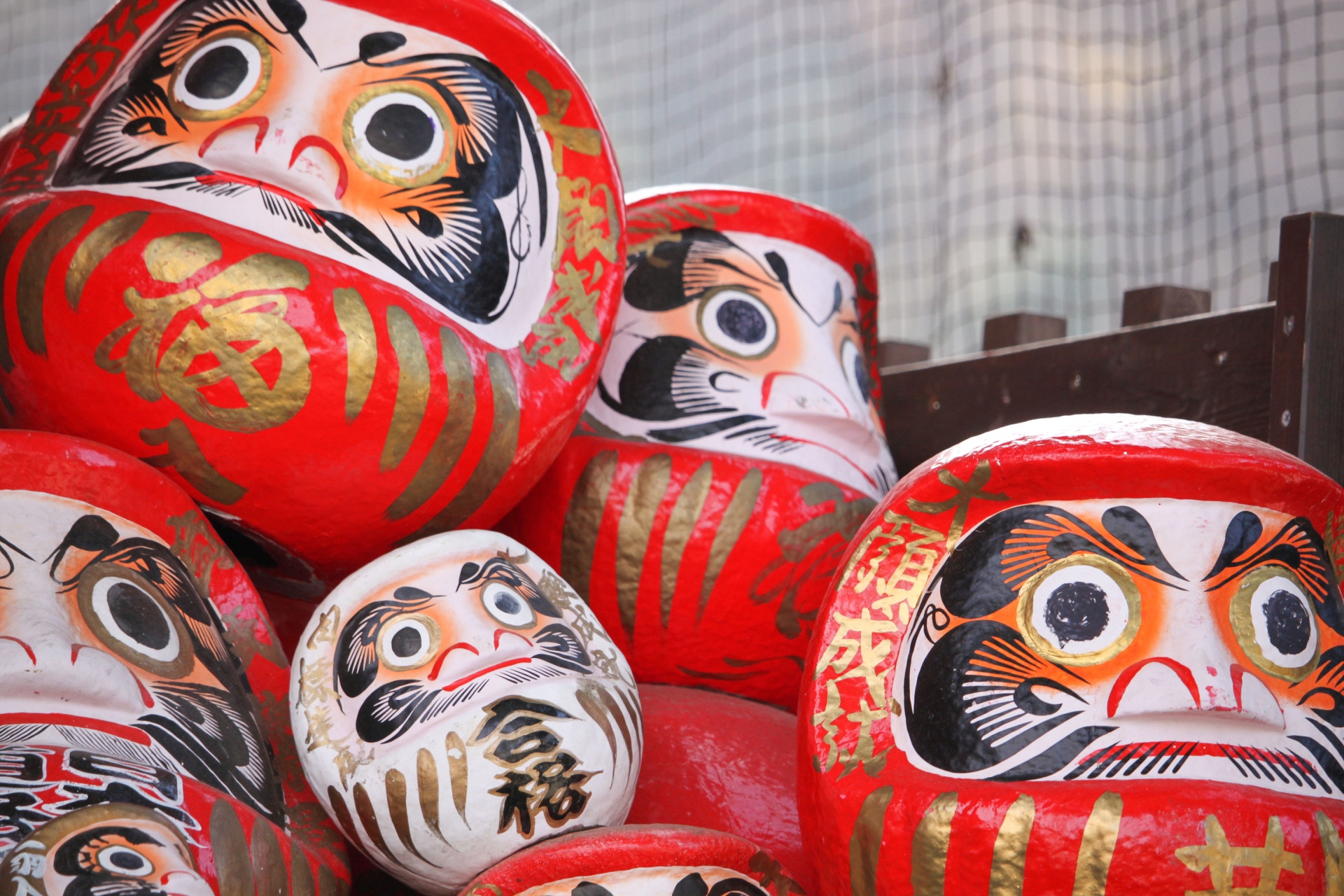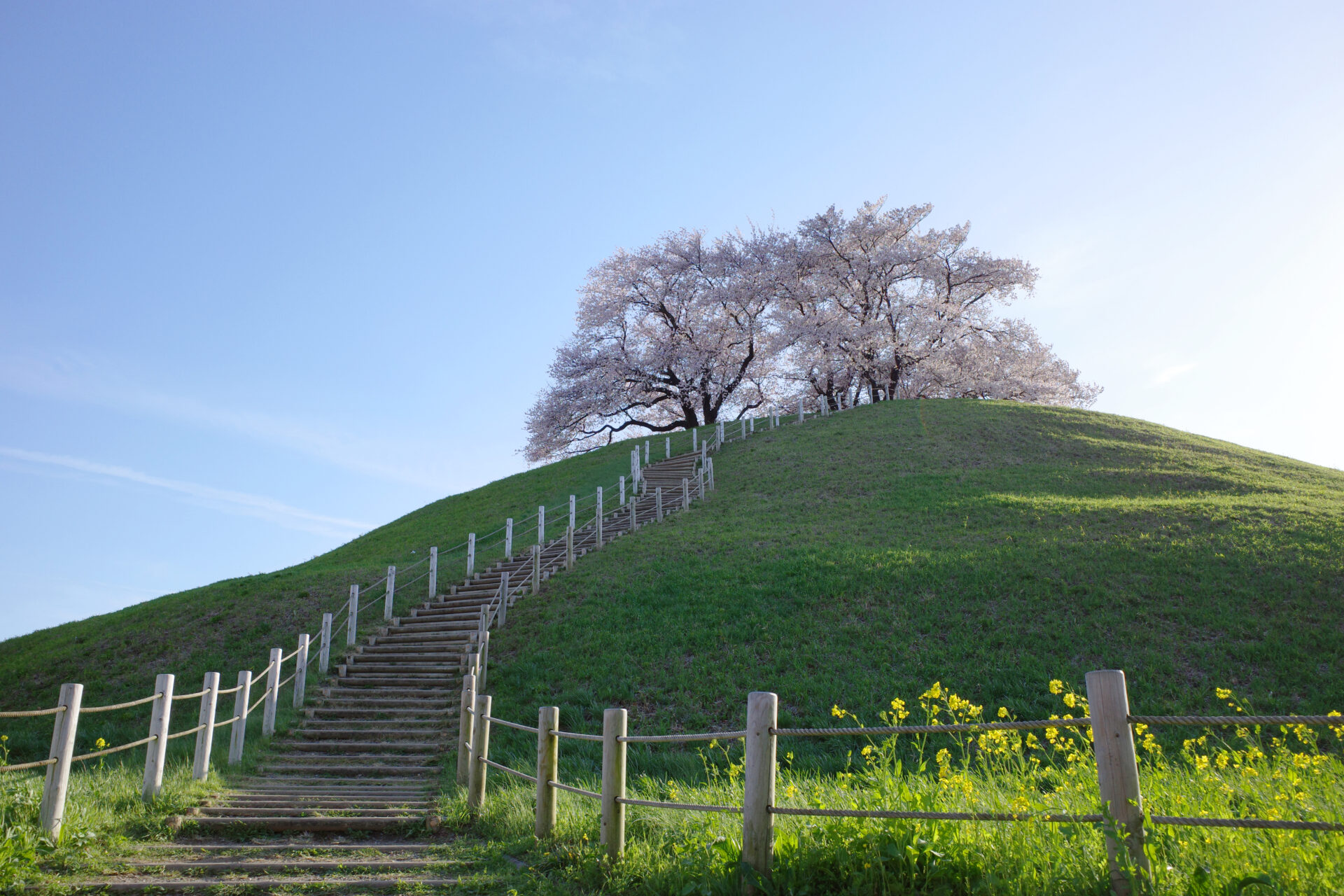
Misty Fujii is a Canadian DJ and writer who came to Japan seeking adventure and stuck around for love. Living life as a bucket list in progress, she’s as passionate about sharing her stories as she is experiencing them. She gets excited about collecting vintage vinyl records, food from all countries, traveling, and renovating her traditional Japanese house. She can be found on Instagram @djmisty
This post may contain some affiliate links. When you click through and make a purchase we may receive some commission, at no extra cost to you.
In Japan, plenty of exciting festivals ring in the new year, a holiday period known as oshogatsu in Japanese. During oshogatsu, the Japanese return to their hometowns to celebrate with their families, and the Shinto deity of the new year is welcomed. Traditions include thorough cleaning of the house, sending New Year’s cards, visiting a temple or shrine and eating foods like soba, mochi and a type of cuisine known as osechi ryori, which is carefully arranged in boxes that are often multi-tiered and sometimes lavishly decorated. Shortly after oshogatsu, festivals throughout the country start taking place to wish for good fortune and luck for the year ahead. Read on to learn about 10 of the best festivals held in January, and how you can enjoy them.
- 1. Toka Ebisu Festival
- 2. Shitennoji Doya Doya Festival
- 3. Nozawa Fire Festival
- 4. Zao Juhyo Festival
- 5. Jozankei Snow Lantern Festival
- 6. Wakakusa Yamayaki Festival
- 7. Miyoshi Bondensai Festival
- 8. Chitose Lake Shikotsu Ice Festival
- 9. Togenuki Jizoson Festival
- 10. Geikosai Festival
- Japan Wonder Travel Tours
- Other articles you might be interested in
1. Toka Ebisu Festival
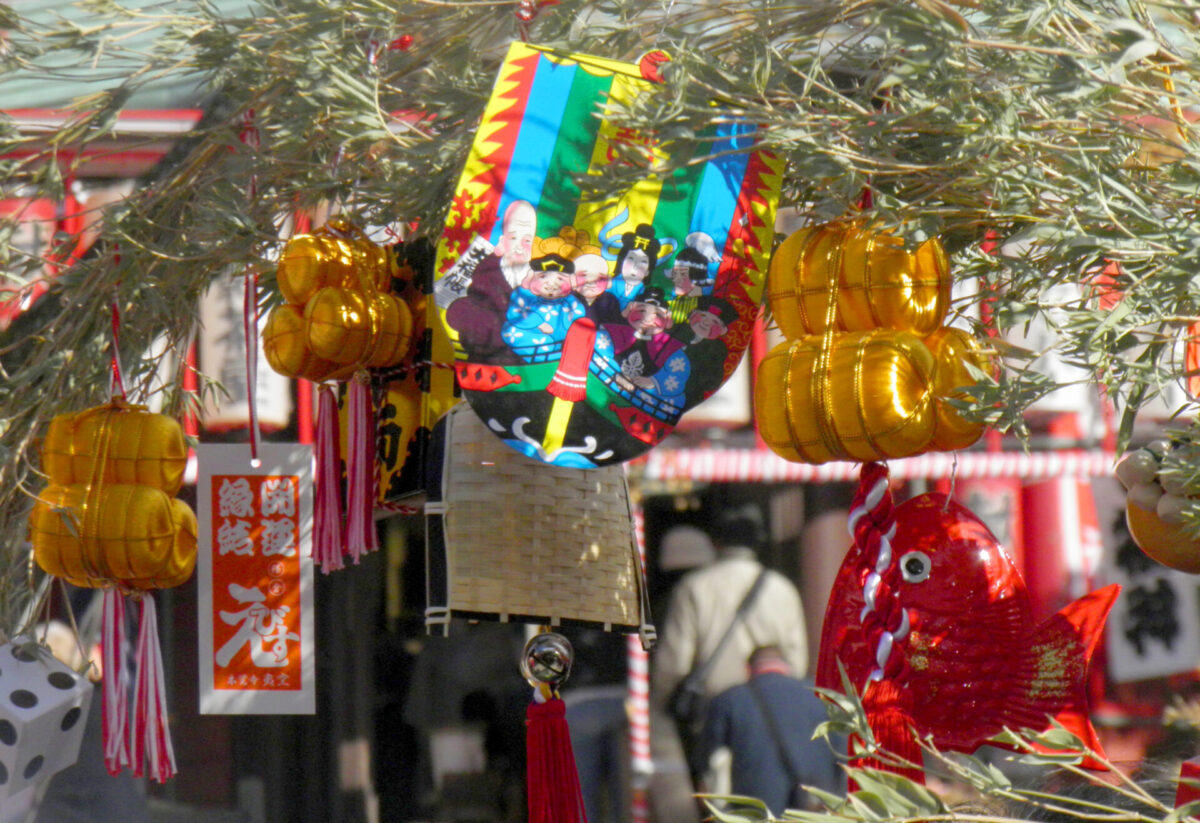
Get off to a good start of the year by praying to the god of good fortune. This is a must-attend festival for business owners especially! While “toka” means “the 10th day” and this is the main day of the festival, the event takes place over multiple days during which thousands of visitors pack Ebisu shrines across Japan to pray for ongoing success in their work life or business. People typically buy branches of bamboo grass for luck and return last year’s bamboo when they visit. There are also lucky charms that can be purchased and attached to the bamboo. With the bamboo grass held high by visitors, you can expect to see rituals, including shrine maidens doing a traditional kagura dance, mochi pounding and a hoekago parade. There are also festival stalls where you can enjoy tasty food and drinks.
When: January 8-12
How to get there: this festival is held in Ebisu shrines across Japan, the most famous ones being Nishinomiya Shrine in Hyogo, Ebisu Shrine in Kyoto and Imamiya Ebisu Shrine in Osaka.
2. Shitennoji Doya Doya Festival
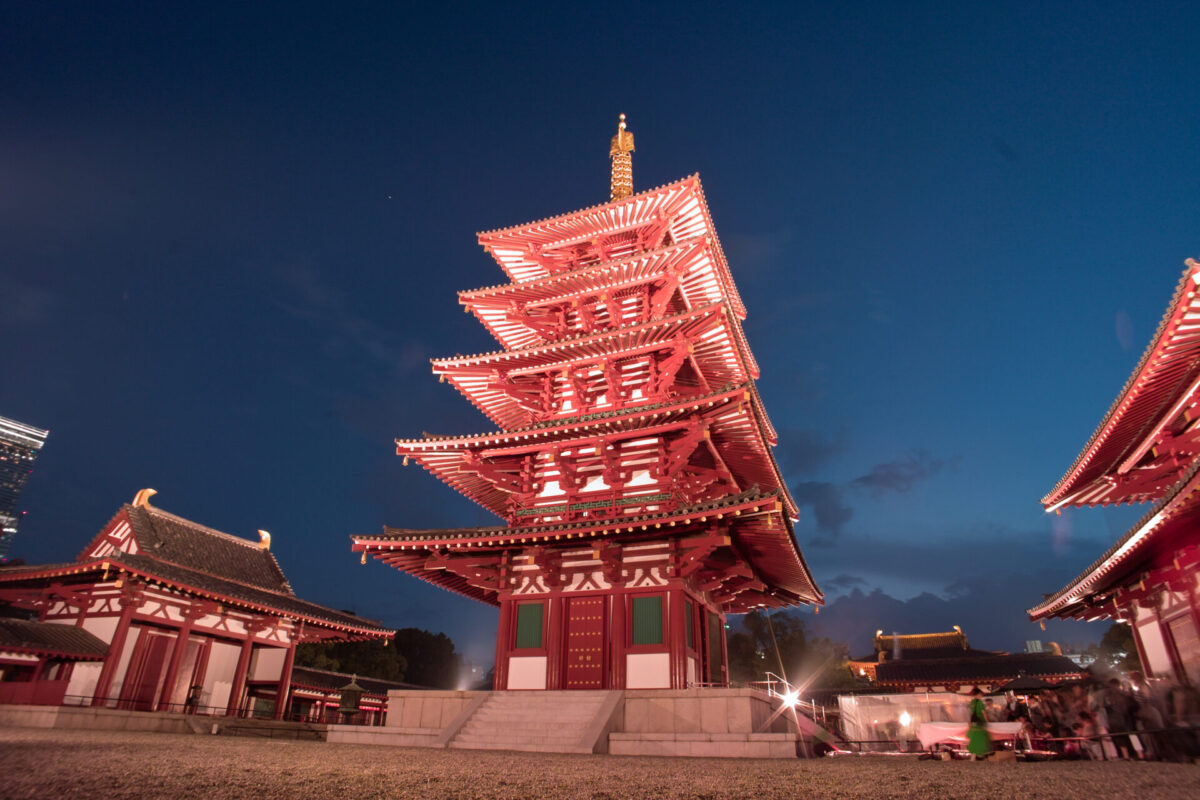
Hot on the heels of the Toka Ebisu Festival comes this lively event to celebrate the end of 14 days of worship after entering the new year. It is a rowdy Buddhist ceremony for good luck where male high school students, dressed only in loincloths despite the cold, are splashed with water while competing for lucky religious items. You’ll hear the young men shouting “doya doya” in the process, representing the sound of thundering footsteps of people rushing into the temple. Held at one of Japan’s oldest Buddhist temples, it’s also an excellent opportunity to do some nearby sightseeing and climb the beautiful five-story pagoda there. This is by far one of Osaka’s quirkiest and most entertaining festivals.
When: January 14 2pm-6pm
How to get there: a 5-minute walk from Shitennoji-mae Yugigaoka Station on Osaka’s Tanimachi Line
3. Nozawa Fire Festival
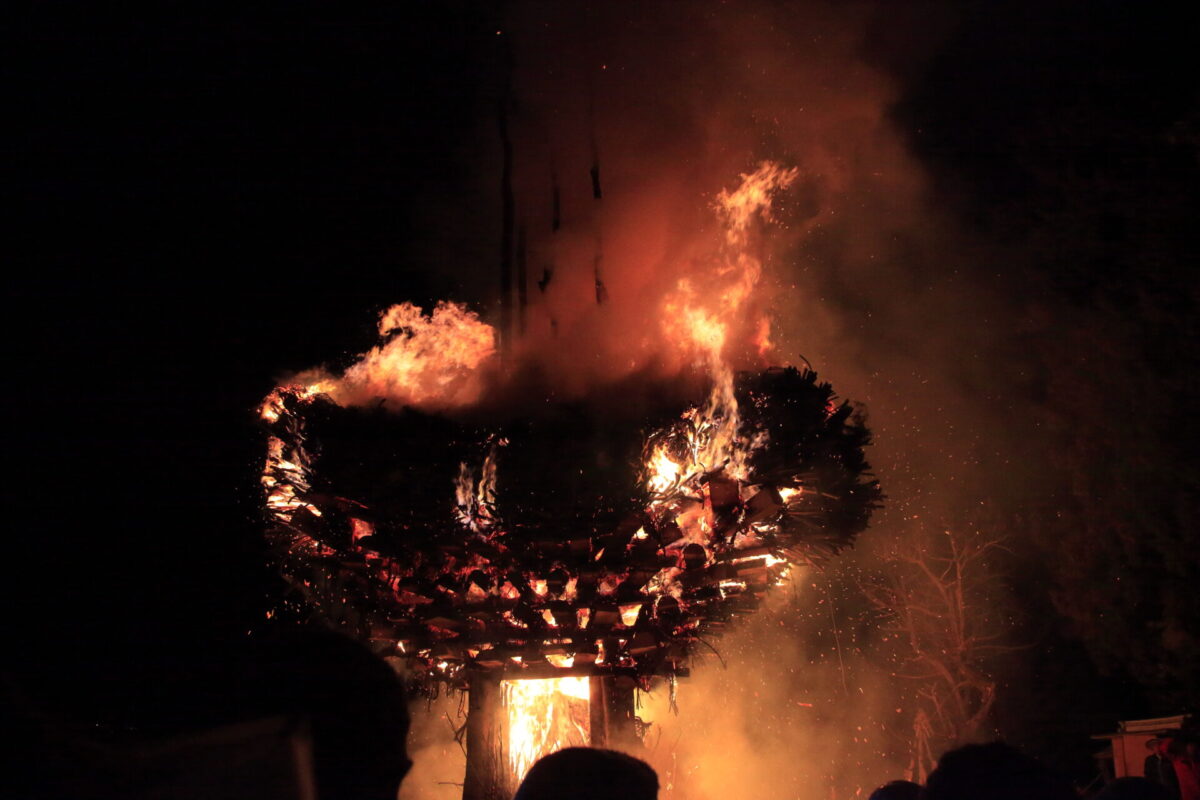
One of Japan’s three major fire festivals, this one in Nagano is a spirited performance where men from the village who are either 25 or 42 years old, defend a 2-meter-tall shrine. The older men sit on the shrine, with the younger boys protecting it from the ground. What makes this exciting, is that they are protecting the shrine from the rest of the villagers, who will rush towards it with flaming torches. The shrine is made the day before the festival and is eventually burnt to a crisp once the defenders have to give up and can no longer protect it. The purpose is to burn away bad luck and wish the village a prosperous year. It also serves to pray for a happy marriage and healthy family.
When: January 15 (6pm-11pm)
How to get there: take the Nagano Snow Shuttle from Tokyo’s airports or Shinjuku Station, the Nozawa Onsen Liner or direct buses from Osaka, Kyoto and Nagoya
4. Zao Juhyo Festival
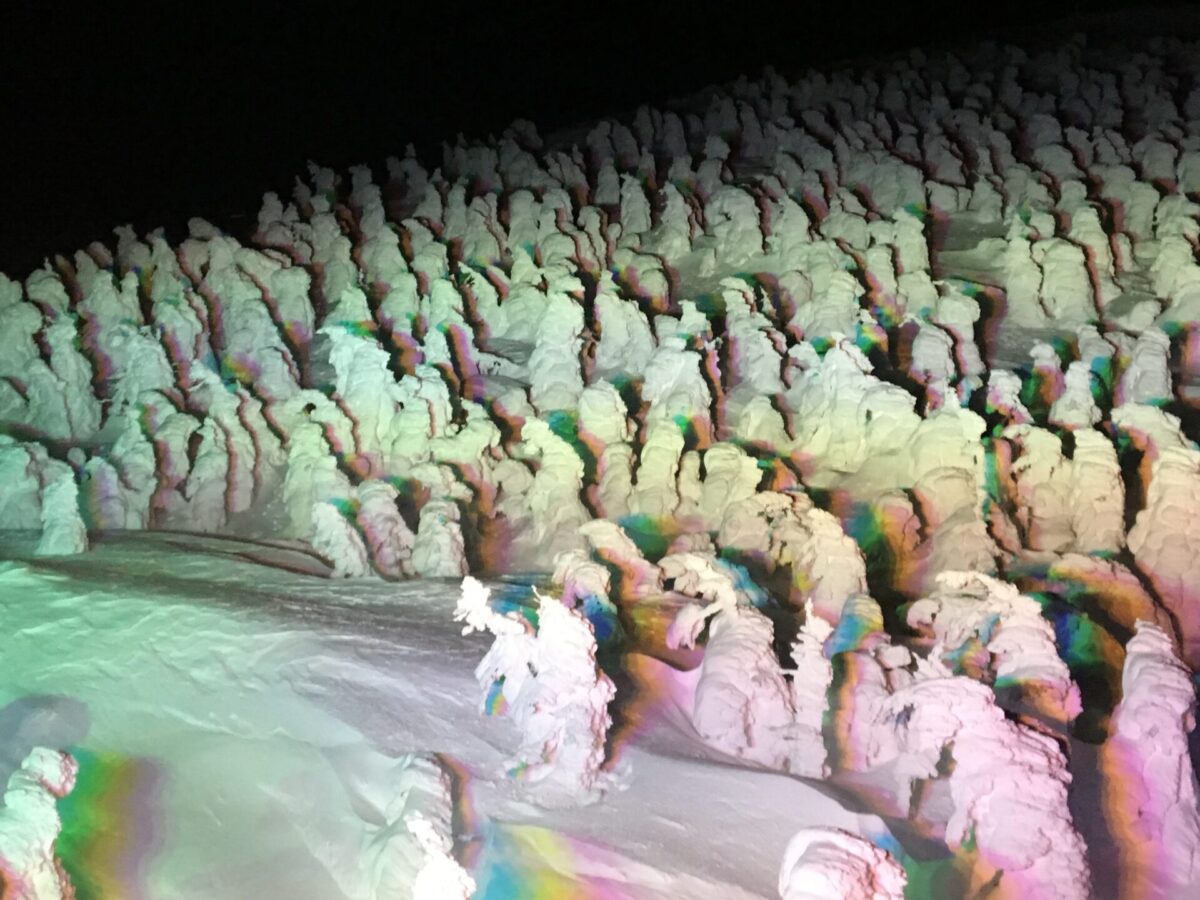
Yamagata’s Zao Juhyo Festival is an annual illumination event at Zao Onsen Ski Resort. The unusual weather conditions at the Zao mountain range help the resort turn into a winter wonderland as the frost-covered trees resemble snow monsters. While the trees take on these shapes throughout the winter, the festival also features illuminated “monsters”, fireworks and special ski events. This is a fantastic festival to see nature’s own artwork and witness this interesting weather phenomenon.
When: December 23th- February 25th
How to get there: take the shinkansen (bullet train) to Sendai Station and from there a direct highway bus to Zao
5. Jozankei Snow Lantern Festival
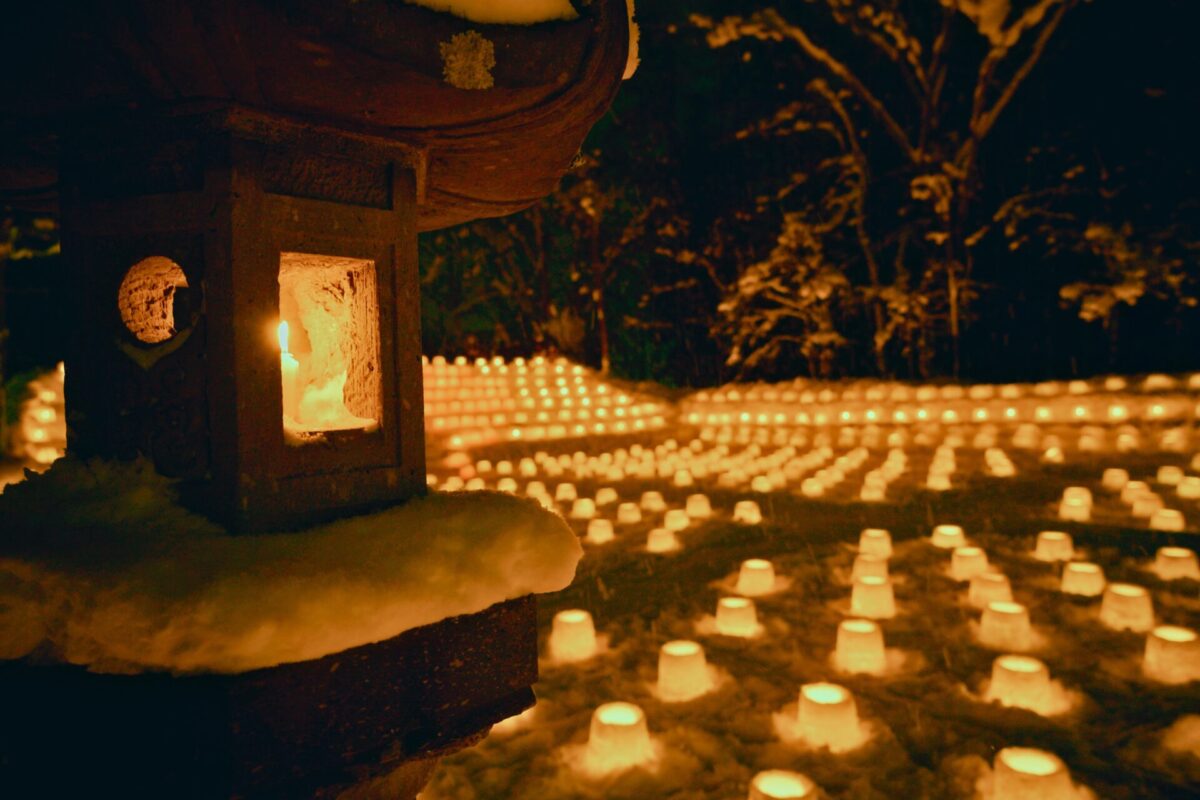
Marvel at thousands of lanterns made of ice and snow for this festival around Jozankei Shrine near Sapporo. The lanterns are placed around town, giving it a magical and romantic atmosphere. Guests can even light a candle to send their prayers and well-wishes to someone special. It’s a very photogenic event and somewhat more peaceful than many other festivals. The Jozankei Snow Lantern Festival makes an ideal side trip for anyone already attending the Sapporo Snow Festival.
When: 2024: January 27-February 3
How to get there: take the free shuttle bus from the town of Jozankei Onsen to the shrine
6. Wakakusa Yamayaki Festival
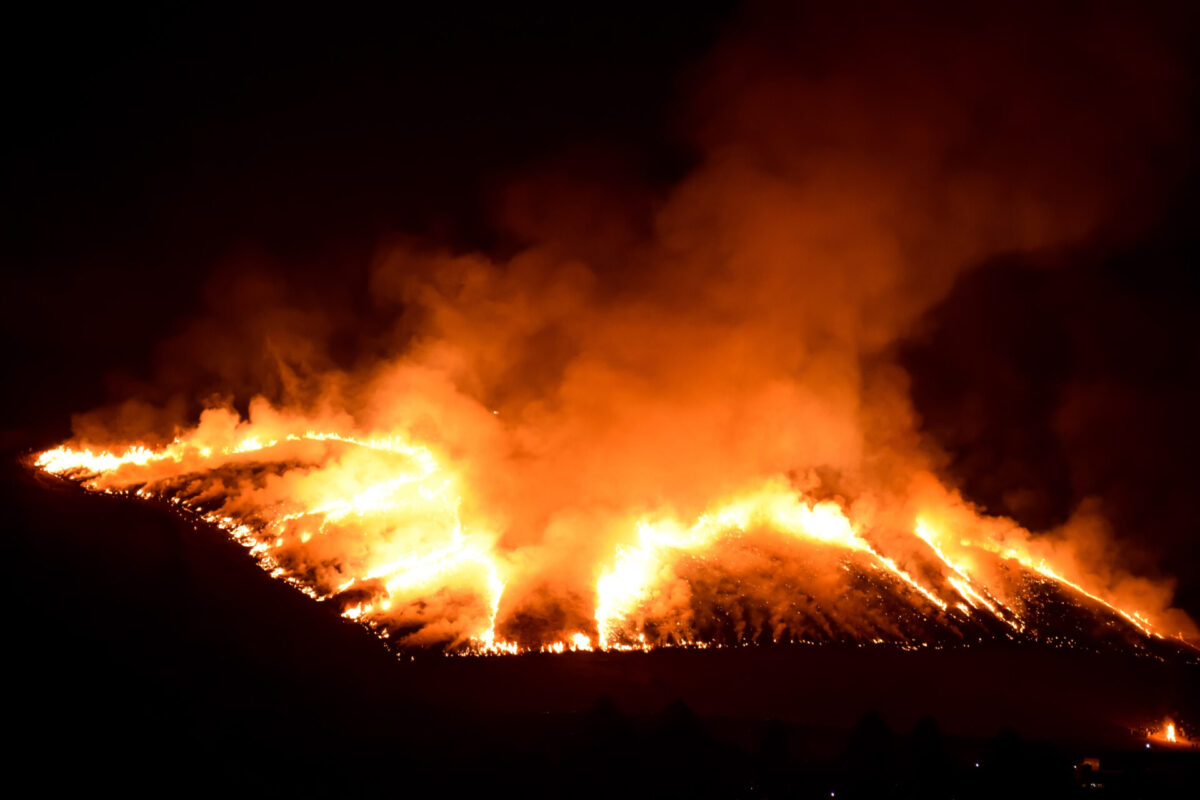
It isn’t every day that you get to see an entire mountain on fire, but that’s precisely what happens during this festival in Nara every year. Visible from most of the city, the grass on Mount Wakakusa is set ablaze for reasons that aren’t known for sure. Some say it used to happen during conflicts between temples in the past, while others insist it’s to drive away wild boars. Whatever the reason, the festival draws big crowds and also features fireworks to make it extra special. You can also take part in the festivities by joining a competition for throwing giant rice crackers. There are many excellent spots to view the burning mountain; if you don’t want to be at the mountain’s base when it happens, watching from across the city is also exciting.
When: late January (January 28 in 2024)
How to get there: buses run from JR Nara and Kintetsu Nara stations to Kasuga Taisha
7. Miyoshi Bondensai Festival
This thrilling local festival in Akita sees groups of townspeople carrying bonden, long sacred wands, to Taiheizan Miyoshi Shrine. Watch the beautifully designed bonden as they pass and try to touch the amulets hanging from the rods to obtain some of the divine power they are believed to hold. The festival is also known as “the bonden fight”, a nickname that attendees will quickly start to understand as things get more aggressive and violent as the participants get closer to the shrine. The bonden are said to attract gods, and getting them to the shrine can sometimes be a grueling race as groups of people fight to reap the benefits of their offerings. People who manage to get their hands on some of the amulets hanging from the bonden can expect good health and harvests, as well as success with their businesses.
When: January 17 (10:30am)
How to get there: take the Akita Chuo Kotsu Bus bound for Taihei and get off at Miyoshi-jinja Iriguchi.
8. Chitose Lake Shikotsu Ice Festival
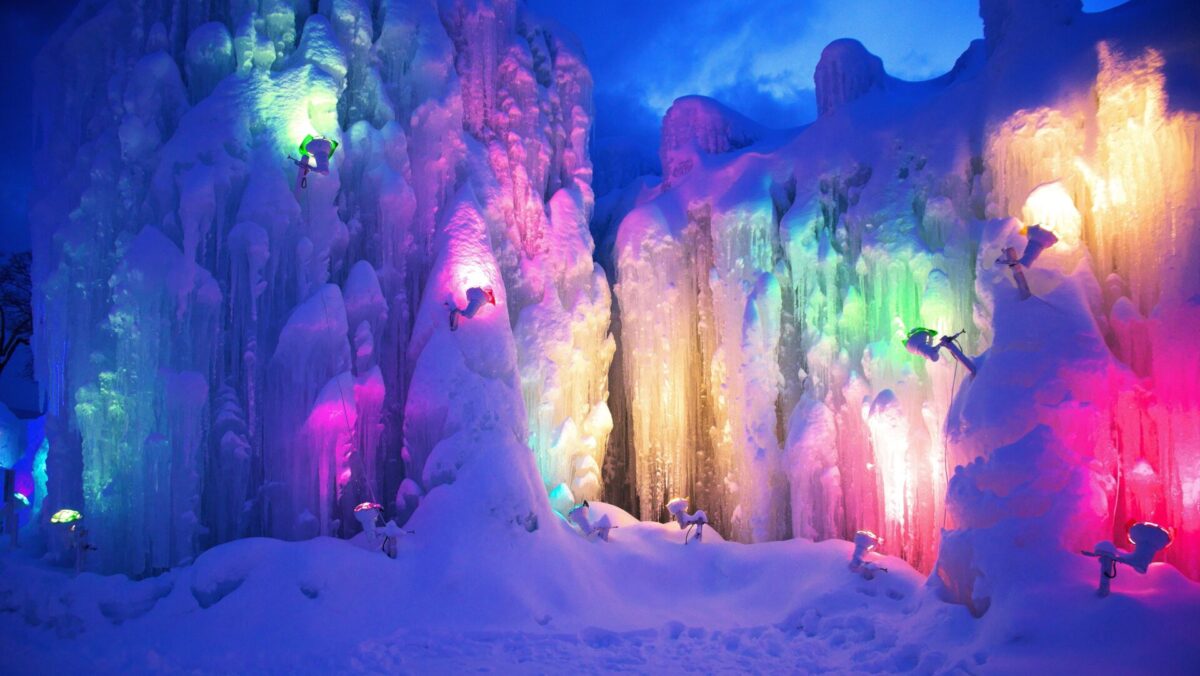
This festival held in Shikotsu-Toya National Park is the perfect family-friendly winter activity. Admire the illuminated ice sculptures made from the lake’s clear water, slide around an ice rink and ride a horse around the park. The festival also features fireworks and drum performances to liven up the atmosphere. The festival also offers the opportunity for a very unique ice wedding where couples pledge their love to one another. Plenty of food and drink stalls serve bowls of hot soba, udon and oden to keep you warm on even the chilliest of days.
When: January 28-February 23
How to get there: take the Chuo Bus from New Chitose Airport.
9. Togenuki Jizoson Festival
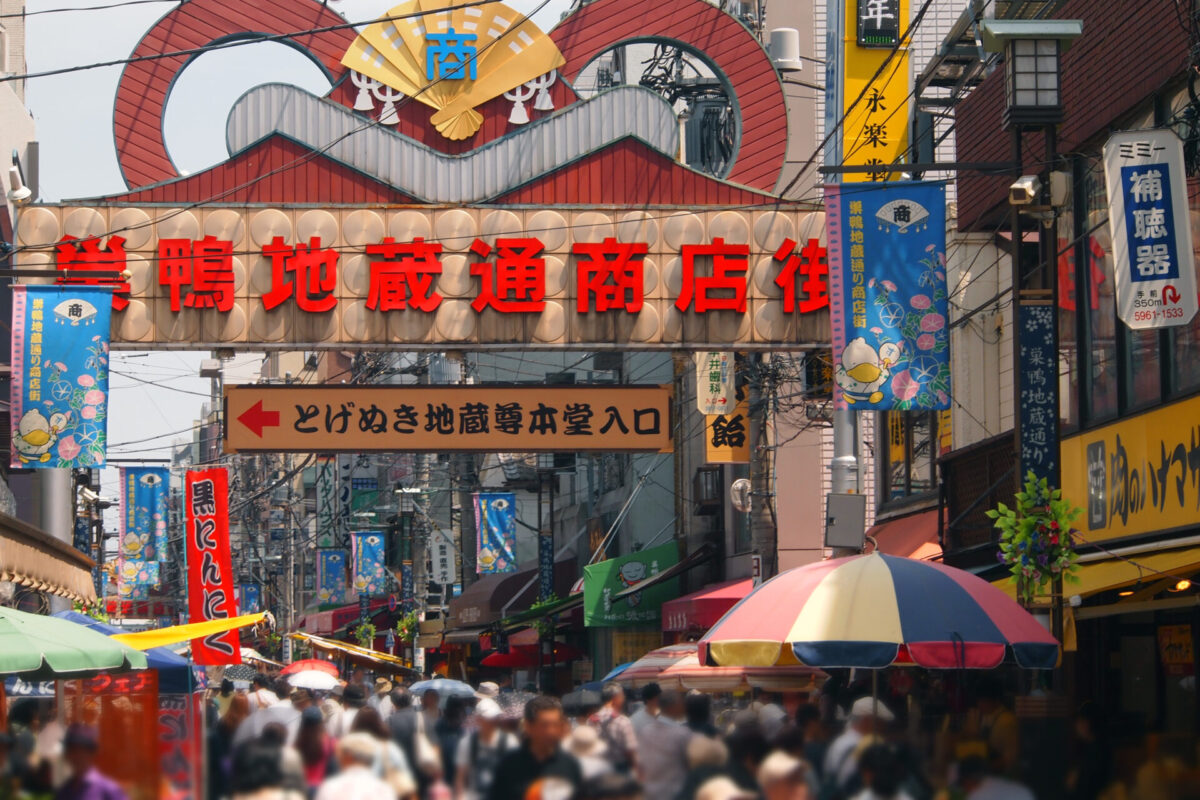
The Tokyo neighborhood of Toshima has been nicknamed “Granny’s Harajuku”, and it’s the place to be at the end of January. Not only does Toshima have the highest population density in all of Tokyo, but it also features the busy shopping street of Jizo-dori. This popular strip really comes alive at the festival time! Halfway down the shopping street is the Togenuki Jizosan Koganji Temple, where people go to pray for healing of their ailments by washing a small statue. During the festival, which sees about 100,000 visitors, twenty priests gather to pray while worshippers come to receive blessings of good health. Don’t miss all the shops selling red underwear; these bright garments are said to bring luck to their wearer!
When: January 24 (prayers at 10:30am and 2:30pm)
How to get there: go to Sugamo Station on the Yamanote Line
10. Geikosai Festival
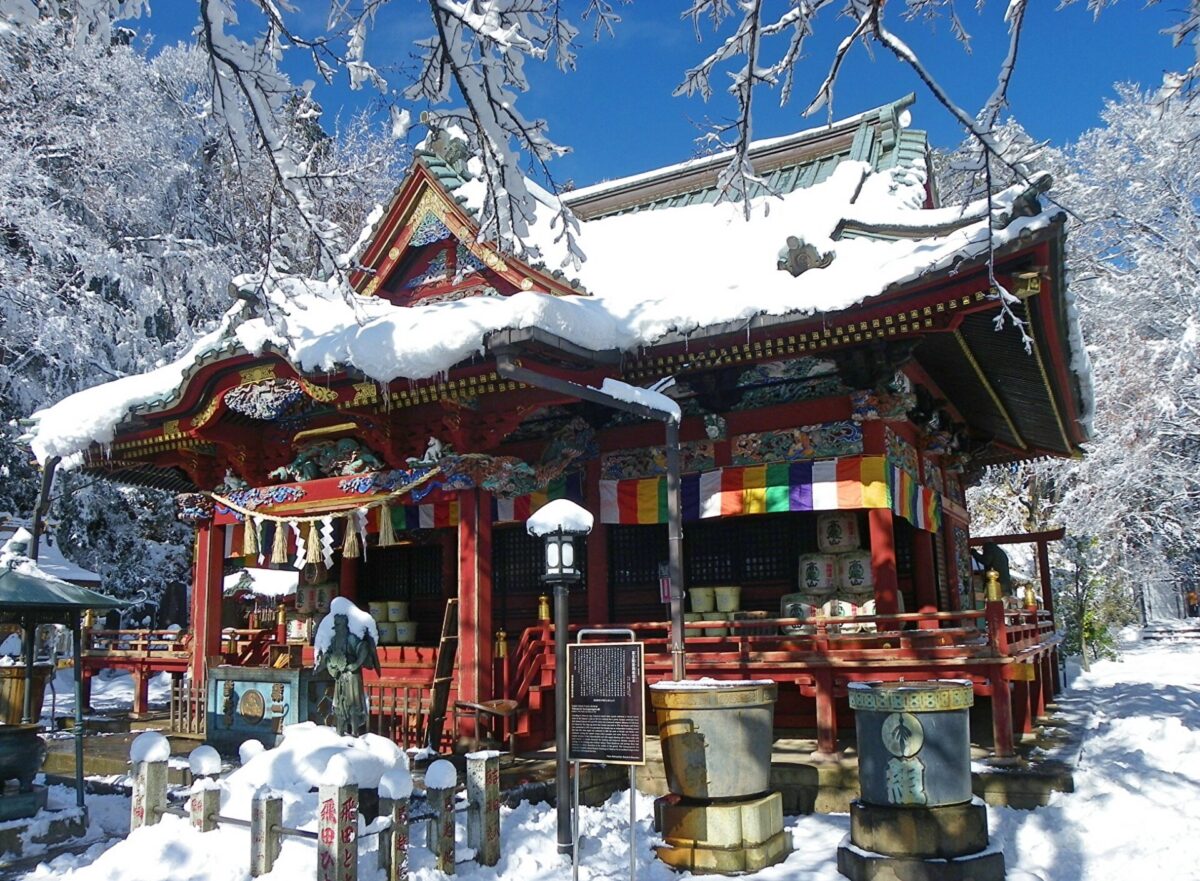
For a memorable way to ring in the new year, head to Yakuoin Temple on Mount Takao in Hachioji, Tokyo. Geikosai Festival means “the festival to welcome the light” and is among the most important Japanese New Year traditions. There may not be a countdown, but starting at midnight, purifying goma fire rituals take place in front of Izuna Daigongen’s statue. When the sun rises, the echo of conch shells being blown as horns fills the air, while priests welcome the new year.
When: January 1 (midnight-5pm)
How to get there: take the cable car from Takaosan Station and prepare to hike about 30 minutes from the mountain’s summit to the temple.
Japan Wonder Travel Tours
Japan Wonder Travel is a travel agency that offers guided tours throughout Japan.
From private walking tours to delicious Food and Drink tours, we can help you organize the best tours just for you! If you want to explore Japan and learn more about the history and backstories of each area you are visiting, our knowledgeable and friendly English speaking guides will happily take you to the best spots!
In addition, we can provide you with any assistance you may need for your upcoming trip to Japan, so please feel free to contact us if yu have any questions or need some help!
▶Tokyo Tsukiji Fish Market Food and Drink Tour
Explore the most lively and popular fish market in Tokyo and try some of the local’s favorite street foods and sake with one of our friendly and knowledgeable English speaking guides!

▶Tokyo 1–Day Highlights Private Walking Tour (8 Hours)
There’s no better way to explore an area than taking a tour with a knowledgeable local guide. You will have the chance to learn about the history and interesting background stories of Tokyo, as well as discover some hidden gems which can be hard to do without a guide.
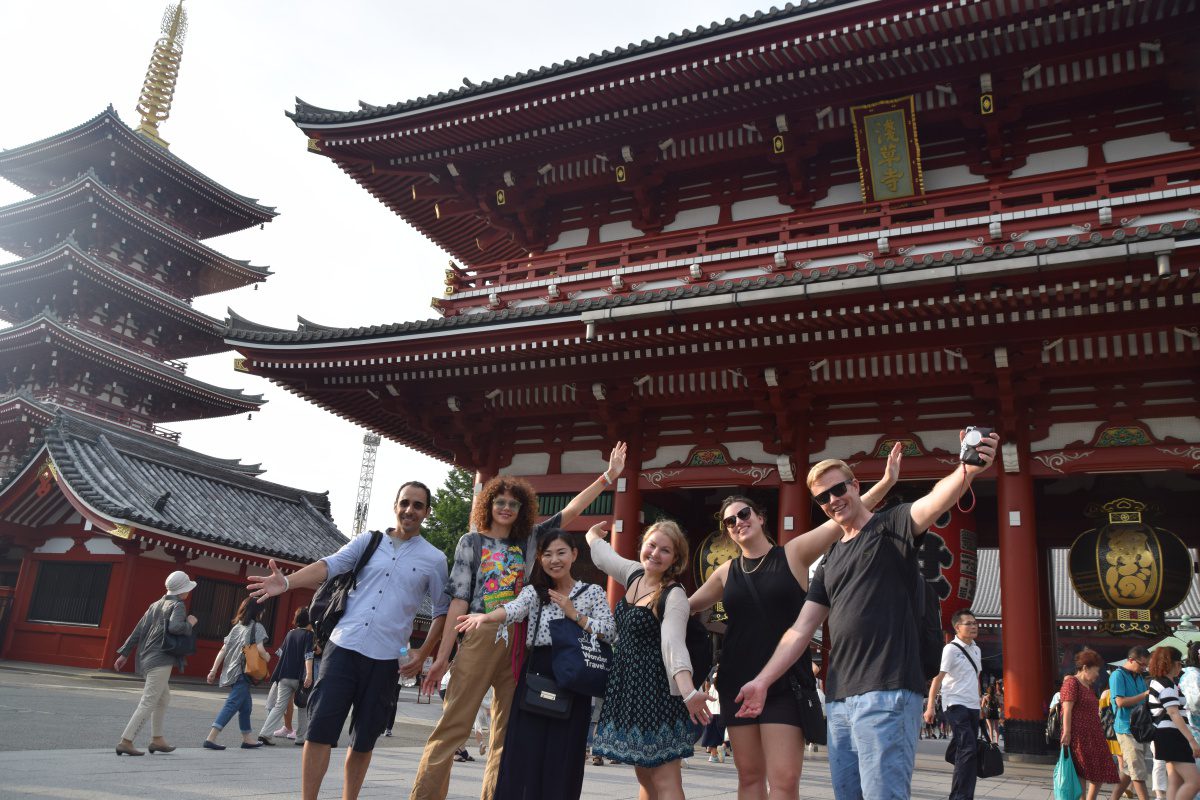
▶Mt. Fuji Day Trip Bus Tour from Tokyo
Experience the breathtaking views of Mt. Fuji by visiting the highlights of the area on our guided sightseeing bus tour! Departing from Shinjuku in central Tokyo, you can travel comfortably to all of the best spots in the area by bus.
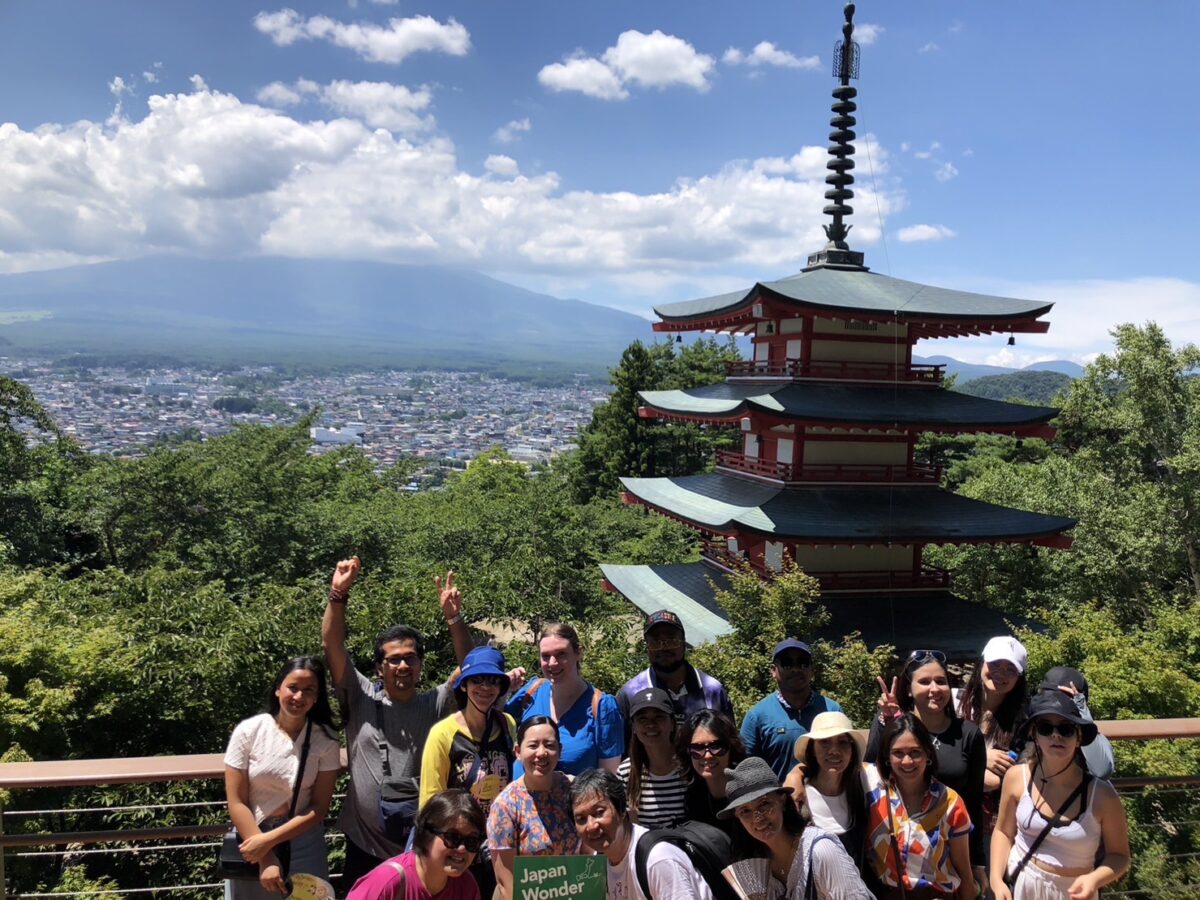
Follow us on Instagram, Facebook, Twitter, and TikTok for more travel inspiration. Or tag us to get featured!
Happy traveling!
